#Stralsund Museum
Explore tagged Tumblr posts
Text
Bernstein: Der wertvolle Schatz der Ostsee
Bernstein, ein bekanntes Souvenir und Bodenschatz der Ostsee, kann nach Stürmen am Strand gefunden werden. Entstanden aus versteinertem Harz, spielt er eine wichtige Rolle in der Region Pommern, wo zahlreiche bedeutende Funde dokumentiert sind. Auch heute wird Bernstein weiterhin verarbeitet, und Ku
Kleine Bernstein-Splitter kann man nach Stürmen am Strand der Ostsee finden Bernstein. Beliebtes Fundstück, Souvenir und Schmuck waren die versteinerten Harze auch als pommerscher Bodenschatz von Bedeutung. Bekannt durch seine Lagerstätten in der sogenannten „blauen Erde“ Samlands, die eigentlich ein grünliche Erdschicht aus der älteren Tertiärzeit ist, steht er heute noch in Ostpommern und…
#Berliner Mineralienkabinett#Bernstein Firma Stantien & Becker#Bernstein Lithothek#Bernstein-Funde Pommern#Bernsteinmuseum#Binz#Greifswald#Hiddensee#Karlshagen#Naturkundemuseum Berlin#Stettin#Stolp#Stolper Bär#Stralsund Museum#Thiessow
0 notes
Text
I was at the Ozeaneum in Stralsund yesterday and I think Ishmael would have loved this

yep, that's a real sperm whale skeleton

and this is one of the multiple life-sized whale models
The museum has so many aquariums too, some of them truly ginormous. It's one of the best museums I know.
7 notes
·
View notes
Text
Prenzlau
Prenzlau ist eine Stadt in Brandenburg mit etwa zwanzigtausend Leuten. Es befindet sich ungefähr einhundert Kilometer nördlich von Berlin und fünfzig Kilometer westlich von Stettin. Es liegt in der Uckermark, eine historische Landschaft, und ist jetzt die Kreisstadt und der Verwaltungssitz von dem Landkreis Uckermark. Prenzlau liegt auch am Ufer des Unteruckersees, der der viertgrößte natürliche See in Brandenburg ist. Die Stadt wurde im Zweiten Weltkrieg beide durch Bombenangriffe und durch Feuer schwer beschädigt, und sie wurde mit Plattenbauten wiederaufgebaut. Prenzlau Bahnhof ist an der Fern- und Regionalbahnstrecke Berlin-Stralsund und deshalb ist ein ICE-Halt. Die Stadt hat manche interessante Sehenswürdigkeiten, zum Beispiel die Sabinenkirche, die die einzige nach einem Heiligen Sabinus benannte Kirche im deutschsprachigen Raum ist, die Stadtmauer und ihre Tore und Türme, und das Kulturhistorische Museum, das sich im ehemaligen Dominikanerkloster befindet. Das Ortsteil von Berlin “Prenzlauer Berg” ist nach Prenzlau benannt.



#langblr#learning languages#language learning#learning german#german language#germanblr#prenzlau#brandenburg#germany#agtew
2 notes
·
View notes
Text

Matthieu was appointed court painter to Duke Friedrich of Mecklenburg- Schwerin in Ludwigslust in 1764, and his portraits show consummate mastery of the Baroque art repertoire. He arranged costly furniture and clothes, with a view from below in a sophisticated fashion. Giese founded an important faience factory in Stralsund in 1755. Here he is shown as a passionate music-lover rather than a successful businessman. Matthieu must have painted this pair of portraits during his stay in Stralsund. It is possible that they were intended for Giese’s country house in Niederhof, West Pomerania. The possibility that the painting shows interior details of this building, which was destroyed in 1947, cannot be ruled out.| Prestel Museum Guides - Gemäldegalerie Berlin, 2017
Chamber Councillor Joachim Ulrich Giese and his wife Sophie Elisabeth, née von Schwerin Painted between 1762 - 1764 by Georg David Matthieu (1737 - 1778)
2 notes
·
View notes
Text
Historic Centres of Stralsund & Wismar
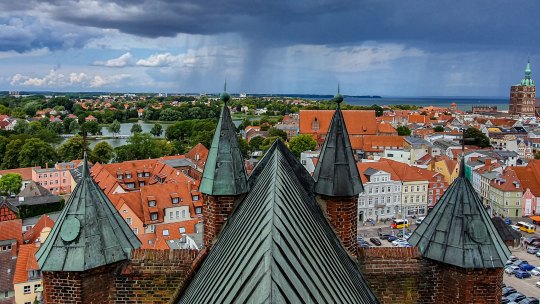
Embark with me on a virtual journey to the historic centers of Stralsund and Wismar, two enchanting Hanseatic cities nestled along the Baltic Sea in Germany. Recognized as a UNESCO World Heritage Site, these coastal gems beckon with their medieval charm, maritime legacies, and a tapestry of architectural wonders that echo the stories of centuries past.
Discover the rich Hanseatic history that binds Stralsund and Wismar. As key members of the Hanseatic League, these cities thrived as trading hubs, fostering cultural exchange and economic prosperity during the medieval period.
Step into Stralsund's Old Town, where gabled houses, Gothic churches, and historic market squares transport you back to the heyday of the Hanseatic League. Marvel at the imposing St. Mary's Church and the iconic Rathaus (Town Hall), testaments to the city's architectural prowess.
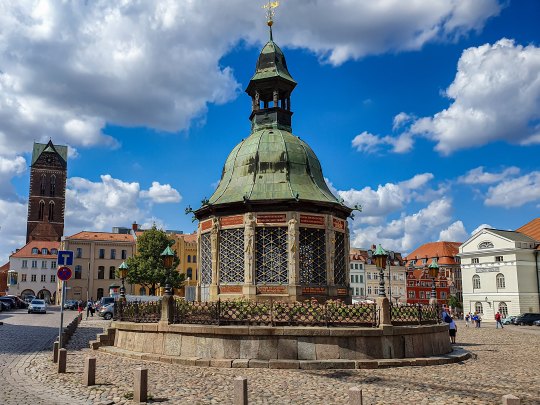
Wander through Wismar's expansive Market Square, surrounded by elegant Renaissance-style buildings that showcase the city's prosperity. The Wasserkunst fountain, a symbol of Wismar's maritime achievements, stands as a centerpiece in this historic square.
Admire the Brick Gothic architecture that defines both cities. From Stralsund's iconic St. Nicholas' Church to Wismar's St. George's Church, the red-brick structures stand as enduring symbols of the region's medieval craftsmanship.
The historic centers of Stralsund and Wismar received UNESCO recognition in 2002. The inscription acknowledges their well-preserved urban layouts, architectural ensembles, and maritime heritage, illustrating the symbiotic relationship between land and sea.
Explore the maritime museums in both cities, where exhibits showcase the maritime prowess that fueled their economic prosperity. From shipbuilding to seafaring, these museums offer a glimpse into the seafaring traditions that shaped Stralsund and Wismar.
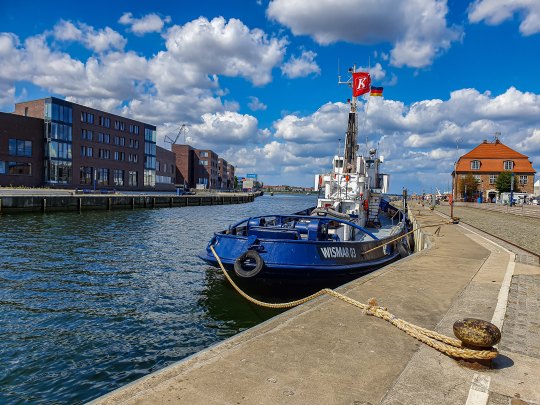
Immerse yourself in the harbor views of both cities, where the rhythmic ebb and flow of the Baltic Sea have shaped their identities. The harbors are not just gateways to the sea but reflections of the maritime soul that runs deep in the veins of Stralsund and Wismar.
Partake in the vibrant festivals and cultural events that animate these historic centers. From medieval fairs to maritime celebrations, these events breathe life into the cobblestone streets, fostering a sense of community and celebration.
In conclusion, the historic centers of Stralsund and Wismar stand as living testaments to the resilience of Hanseatic heritage and the enduring beauty of coastal cities. As a UNESCO World Heritage Site, they invite us to traverse their medieval streets and harbor fronts, where the echoes of history resonate with each step. When you're ready for a digital sojourn through time, Stralsund and Wismar promise to captivate and inspire. 🏰🌊🇩🇪
#historic#center#wismar#stralsund#culture#unesco#world heritage#city#town#hanseatic#league#baltic#sea#travel#germany#europe
2 notes
·
View notes
Text
Nach Umbau: Meeresmuseum in Stralsund wieder offen für Besucher
In einem ehemaligen Kloster zeigt das Museum die vielfältige Unterwasserwelt. Nach längerem Umbau hat es seine Pforten am Mittwoch wieder geöffnet.
0 notes
Text
Prussian and German fortifications on the Baltic coast
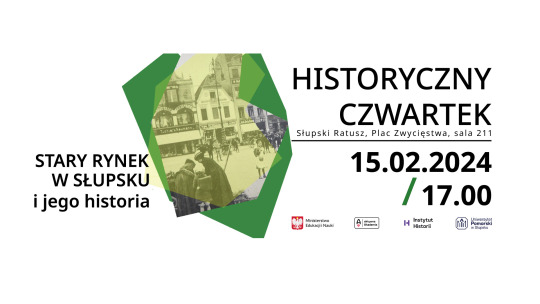
The Museum of Central Pomerania in Słupsk invites you to a meeting from the series "Uniformed services, history and technology". The lecture titled "Prussian and German fortifications on the Baltic coast" will be delivered and conducted by Mariusz Wojciechowski.
As Mariusz Wojciechowski writes, "the lecture will be devoted mainly to the 19th-century Prussian and German fortifications located on the Baltic coast, built before the outbreak of World War I. Military architecture from this period was mostly based on urban fortifications: Stralsund, Szczecin, Kołobrzeg, Gdańsk and Królewiec. Fortifications were extensively expanded starting in the 18th century (e.g. in Szczecin), and in the 19th century they were transformed into fortresses that came under the supervision of the state military services. At the same time, in the 19th century, new fortifications were built, not related to urban organisms, but to ports (e.g. Świnoujście, Piława and Klaipeda). The lecture will be richly illustrated.
1 note
·
View note
Photo

Ozeaneum 🐟 💙 #vacation #stralsund #mecklenburgvorpommern #museum #aquarium #underwater #sealife #northsea #balticsea (at Ozeaneum Stralsund) https://www.instagram.com/p/Chzcq83D7PF/?igshid=NGJjMDIxMWI=
66 notes
·
View notes
Text




Oh to be a witty, passive-aggressive scientist.
(An exebition in the Ozeaneum, Stralsund. A german ocean and sea museum.)
#this is an 'aquarium' in a sea museum#it is build up exactly like the ones that have alive fish in them#which is so funny to me#I idealise the writer of those signs#Ozeaneum#museum#Stralsund#aquarium#plastic pollution#scientists#in addition#the Ozeaneum is totally worth the trip. superp information value. and only 'local' fish tanks of the baltic and north sea
0 notes
Photo

Bild des Tages: Pinguine im Ozeaneum in Stralsund
1 note
·
View note
Photo

rips and vertebraes, part 1
Meeresmuseum Stralsund, Germany
41 notes
·
View notes
Text

Ansichtskarte
Meeresmuseum Stralsund. Museum für Meereskunde und Fischerei der DDR Finnwal (Balaenoptera Physalus).
Reichenbach (Vogtl): BILD UND HEIMAT REICHENBACH (VOGTL) (V 1/B 26/82 IV-14-483 01 01 32 170 K).
1982
#Stralsund#BILD UND HEIMAT#1980er#Philokartie#DDRPhilokartie#Museumsphilokartie#Stralsundphilokartie#AlltagskulturDerDDR#Meereskunde#MeereskundeMuseum#Ansichtskartenfotografie#AnsichtskartenfotografieDerDDR#deltiology#deltiologia#VintagesPostcard
29 notes
·
View notes
Note
Hello,
First of all i am sorry if it may be diffcult so tw for the holocaust.
My late grandmother passed away four years ago
My late grandmother was a proud Jew holocuast survivor. One of the things that were natural to her was the speaking of multipal languages, including German which was her mother's tonge.
What would you recommend A. Going to Germany for the first time and B. The best way to learn German? I already know Hebrew, Russian and Yiddish, i jut want to honor her memory in the best way possible.
Thank you
Hi anon, sorry for the late answer, I was thinking about what best to recommend.
To answer your first question, I'd say it depends on what you want to see in Germany. Like, do you want to visit memorials and similar places for the Holocaust? Then Berlin is probably your best place to start/visit. There you find the biggest (?) memorial in Germany - here's the link to their website (in English) with the different memorials, exhibitions, news etc. Although that's obviously not the only memorial ("Mahnmal") for the victims of the Holocaust. You'll also find so-called "Stolpersteine" in many places in cities of Germany and several other european countries. Here's a website (in English) with more informations about them. Again, those are not the only memorials, if that's what you want to visit in Germany. Here's an article about several more places - it's in German tho but I'm sure if you put the link into Google translator it should be fine.
If you just want to visit sights or "famous" places in Germany, here are some other recommendations:
If you like castles and historic places, then Schloss Neuschwanstein in Bavaria might be something for you ("Schloss" is castle). That or Schloss Sanssouci and its gardens in Potsdam near Berlin.
If you like to go hiking then the "Sächsische Schweiz" in Saxony or the "Elbsandsteingebirge" or the "Alpen" in the southern part of Bavaria close to the Austrian border might be something for you. The "Sächsische Schweiz"/"Elbsandsteingebirge" ("Gebirge" is mountains) has smaler mountains than Bavaria but they are liked by free climbers (?), while the "Alpen" (alps) are higher/better for longer hiking tours.
If you prefer big cities and shopping, Munich in Bavaria and Berlin are probably more for you. It's been a while since I've been to Munich but I read that the "Marienplatz" is a good starting point, as it's in the "Altstadt" (the historical part of a city - if you like historic places look out for the "Altstädte" of the cities that you visit - they often have buildings that have been there since Medieval Times), and it's also apparently the starting point of the part of the city for pedestrians/for shopping. If you like second-hand stuff there are a lot of small second-hand shops in Berlin and there's also a four-stories building, the "Humana Secondhand-Kaufhaus Friedrichshain" ("Kaufhaus" is department store). Here's a little more info about it (in German). If you prefer smaller cities with a pretty "Altstadt" Dresden or Görlitz in Saxony might be something for you. In Dresden you also find a cool interactive science museum, the "Deutsches Hygiene-Museum Dresden".
If you like amusement parks and such then the "Euro-Park Rust" near Rust or "Belantis" near Leipzig, Saxony, might be something for you. Or the "Leipziger Zoo" if you like zoos.
If you prefer coasts or seaport cities then the cities Hamburg, Bremen or Lübeck might be something for you. All three also have pretty "Altstädte" with many historical buildings and places. In Bremen the "Schnoor" ("Schnur" is Thread) or the "Schnoorviertel" ("Viertel" is quarter) is pretty famous. It's a quarter in Bremen with very narrow streets and high buildings, owing to building restrictions and few space. Here's a little more information (in English) about it. Or, if you like museums about the sea the "Ozeaneum" in Stralsund might be something you'll enjoy - and while you're in Stralsund you might like to visit Rügen, the biggest island of Germany, which is very close by. On the other side of Northern Germany you can find the "Wattenmeer" (Wadden Sea), which is famous for its ecosystem, including many birds and seals. Tho some parts are only visitable with guides to save the environment (and the visitors as the sea/tides can be fast and dangerous). Another interesting museum about climate in different parts of the world is the "Klimahaus Bremerhaven" ("Klima" is climate, "Haus" is house). It's an interactive museum where each room simulates a different climate/region.
Here's a link to an article with more recommendations (it's in German but again, I'm sure if you put the link into Google translate it should be find).
Which brings me to the second part of your question. I'm currently learning one completely new language and one I've learned in school in the Duolingo-App, which I like because it's free (or at least there's a free version which, in my opinion, is as good as the pay version). Depending on your starting-language the quality of the course can differ - I found that the English course for French speakers includes more vernacular (?) French than what I learned in the French course for German speakers. There are also some German blogs on here that you might like to follow to practice German (not all their posts are in German, just some). For example @official-german-medienlandschaft @official-kinderkanal @langernameohnebedeutung @useless-germanyfacts @deutsche-bahn @official-german-gaming @official-german-schulsystem @official-nordrheinwestfalen @officialgreifswald.
@salvadorbonaparte also made a wonderful (!) post with language learning resources - it's their pinned post.
Hope this helps - have a nice day :)
If you have more questions feel free to ask 😊
3 notes
·
View notes
Photo

Stralsund, Erich Heckel, 1912, Brooklyn Museum: European Art
Size: Image: 11 13/16 x 14 3/8 in. (30 x 36.5 cm) Sheet: 24 x 20 1/4 in. (61 x 51.4 cm) Medium: Woodcut on heavy wove paper
https://www.brooklynmuseum.org/opencollection/objects/70679
24 notes
·
View notes
Text

Matthieu was appointed court painter to Duke Friedrich of Mecklenburg- Schwerin in Ludwigslust in 1764, and his portraits show consummate mastery of the Baroque art repertoire. He arranged costly furniture and clothes, with a view from below in a sophisticated fashion. Giese founded an important faience factory in Stralsund in 1755. Here he is shown as a passionate music-lover rather than a successful businessman. Matthieu must have painted this pair of portraits during his stay in Stralsund. It is possible that they were intended for Giese’s country house in Niederhof, West Pomerania. The possibility that the painting shows interior details of this building, which was destroyed in 1947, cannot be ruled out.| Prestel Museum Guides - Gemäldegalerie Berlin, 2017
Chamber Councillor Joachim Ulrich Giese and his wife Sophie Elisabeth, née von Schwerin Painted between 1762 - 1764 by Georg David Matthieu (1737 - 1778)
2 notes
·
View notes
Text
But what is a chair?
"You shut up", an aquaintance of mine would say when someone threw the question into the room. Apparently she once got into an endless discussion with some friends about this, only cut short by their mutual exhaustion.
"A chair is something you can sit on. Is a rock a chair, then?" or "If you go into an art museum and there are chairs without seating surfaces, are they still chairs?", the questions would go round and round.
"I think I can answer that", I'd said, but she told me "Nope. Nope - nope, I'm not doing that again." and I've been sitting (hah) on my reply ever since. Until now.
(Am I procrastinating with this on something I should actually be doing? You bet I am!)
1. Categorization and You
This may be "duh"-territory, but humans don't just use one method of classification. By that I mean, they don't just use "Yes tomato/No tomato" on everything, but that their systems of classification have different kinds of logic and rules.
So, first question to find out what a chair is: Which system of categorization are we even using?
2. Necessary and Sufficient Requirements
Now, at first you might be tempted to just describe what a chair is:
"A chair is a... structure with four legs, a seating surface and a backrest..."
What about three-legged chairs? What about chairs with armrests?
"A chair is a usually four-legged structure with a seating surface which may or may not come with armrests."
Now we're getting closer! We have understood that some traits are necessary while others aren't. This type of categorization is often used in science. Does this species have a spine? It's a Vertebrate. Does it have scales? It might be a lizard, but not necessarily.
The system of sufficient and necessary categorization rests on the assumption that things can even be neatly categorized into boxes, into either/or, into yes/no. It is also strictly logical.
For the chair, however, this approach spells your doom. Because you cannot escape the necessity to just keep stacking on traits and exceptions to define what a chair truly is:
"A chair is a structure with usually four legs and a backrest, sometimes with armrests and its that has to be high enough for an adult human of... average height(?) to sit on (except if it's a chair for children), or except if it's not, for example as an art piece or a piece of advertisement..."
... but is this a chair, then?

And then you get into discussion into what a chair is made of and you do not want to do that, trust me.
So this approach, generally, doesn't work for things where you can have opinions. And even if it did, it would result in a definition that's way too wordy and just not elegant. But we are onto something with that "average height for a human to sit on"...
3. Lexicography and Conceptual Analysis
What really helps us out here is that a chair is an artefact, by which I mean, it has been made by humans for humans. Thus, is has a function which defines it.
"A chair is a piece of furniture made for a single person to sit on."
- and then you can get into traits and how they support or do not support this function. Armrests or no armrests? Amount of legs? Style? Material? All that probably depends on where and how that chair is supposed to be used in variations of its original function.
And you can use neighboring categories to compare and contrast: "The chair, in contrast to an armchair, is not primarily designed to be relaxed in. The chair, in contrast to the bench, is meant to be used by one person..."
This type of categorization gets to the point quickly and elegantly, while it can still be expanded on. But then why are there still some paragraphs left over on this post?
... (tell me, Will) is this a chair?
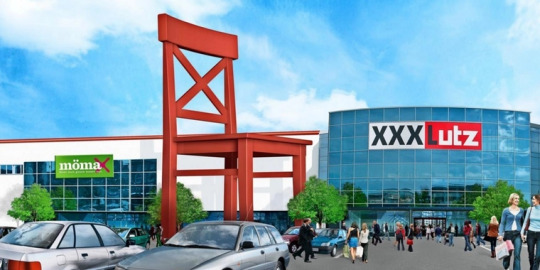
What human is supposed to even get on that? And even then, there would obviously more space on it than for just one person. Obviously, this is not a piece of furniture made for sitting on. Yet, ask any person on the street and they would name it "a chair". What gives?
4. Protoype-categorization
Now before we go on, I gotta give a quick shout-out to my man René Magritte, who coined the problem quite nicely with "The treachery of images" - because you could just say that the above is not truly a chair, but a sculpture of a chair.
...buuut, in everyday-life no-one really thinks that way. You don't take a rubber-sword and think "verily, this is not a sword, but a caoutchouc replica!", you think "heehoohoo sord, gotta bonk".
And that's the key-word here: Everyday categorization!
On a day-to-day basis, we generally use prototype-categorization to get around. In contrast to the neat and logical categorization of necessary and sufficient requirements and the elegant but function-focused conceptual analysis, prototype-theory is fast... and superficial.
Protoypes have a kind of wibbly-wobbly field of traits with a nucleus and a soft border, where the traits closer to the nucleus are considered to be more important, traits closer to the border less so:

The (nucleid) typical traits of a chair are: Backrest, four legs, seating surface, you can sit on it. The chair-iest of chairs have these traits. It is the gold-standard for chairs in your mind. The more you deviate from this look, the more un-chairy your chair becomes. Something like "made of wood" is often part of your mental image, but in the grand scheme of things, it's not that important. This categorization neither puts nature/status nor function front and center, but appearance.
If it walks, swims, quacks and looks like a duck, it's a duck, even if it's actually a terminator-style replica of a duck.
This is also how you can explain fun concepts like people calling seals "sea doggo" - it's recognizing that seals do superficially resemble dogs (= share many traits we associate with dog-ness, the nucleus of the protoype-category) while being very aware that from a science perspective, dogs and seals are very far apart.
Every type of categorization has its advantages and disadvantages and it is up to you to recognize which one is the right one for the situation. And sometimes it's just fun to spot where the subconscious switch from one to the other produces confusion :)
5. In conlusion
what is a chair? heck if I know.
(Sources under the cut)
Text:
Kleiber, Georges: Prototypensemantik: Eine Einführung, Tübingen, 1993.
Wierzbicka, Anna: Lexicography and conceptual analysis, Ann Arbor, 1985.
Pictures:
glassdiningfurniture.co.uk/montrose-chesterfield-grey-fabric-two-seater-sofa.php
ostsee-zeitung.de/Vorpommern/Stralsund/XXXLutz-in-Stralsund-Wie-die-Hansestadt-vermoebelt-wird
slideshare.net/kimveale/metaphor-processing-tutorial
48 notes
·
View notes